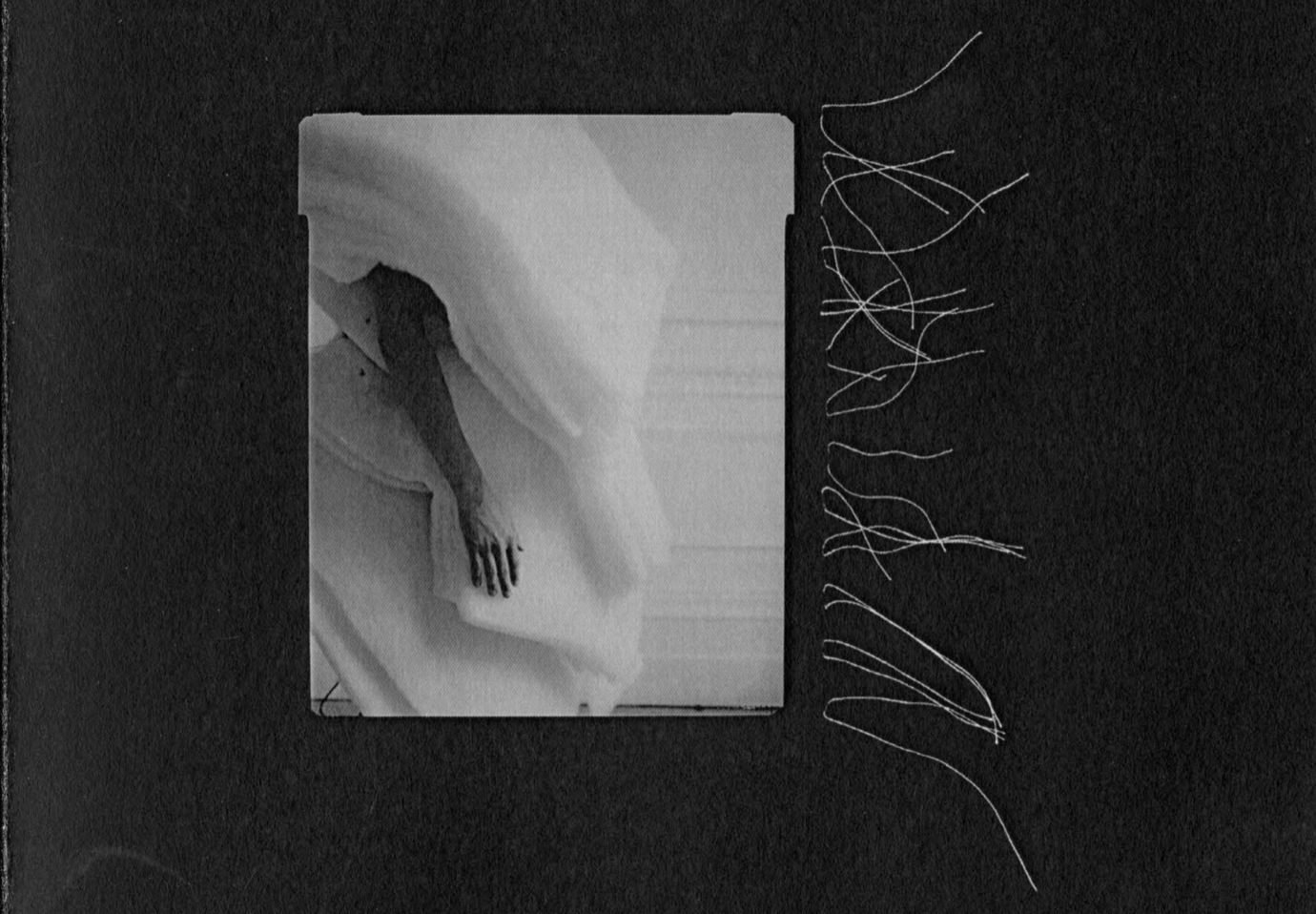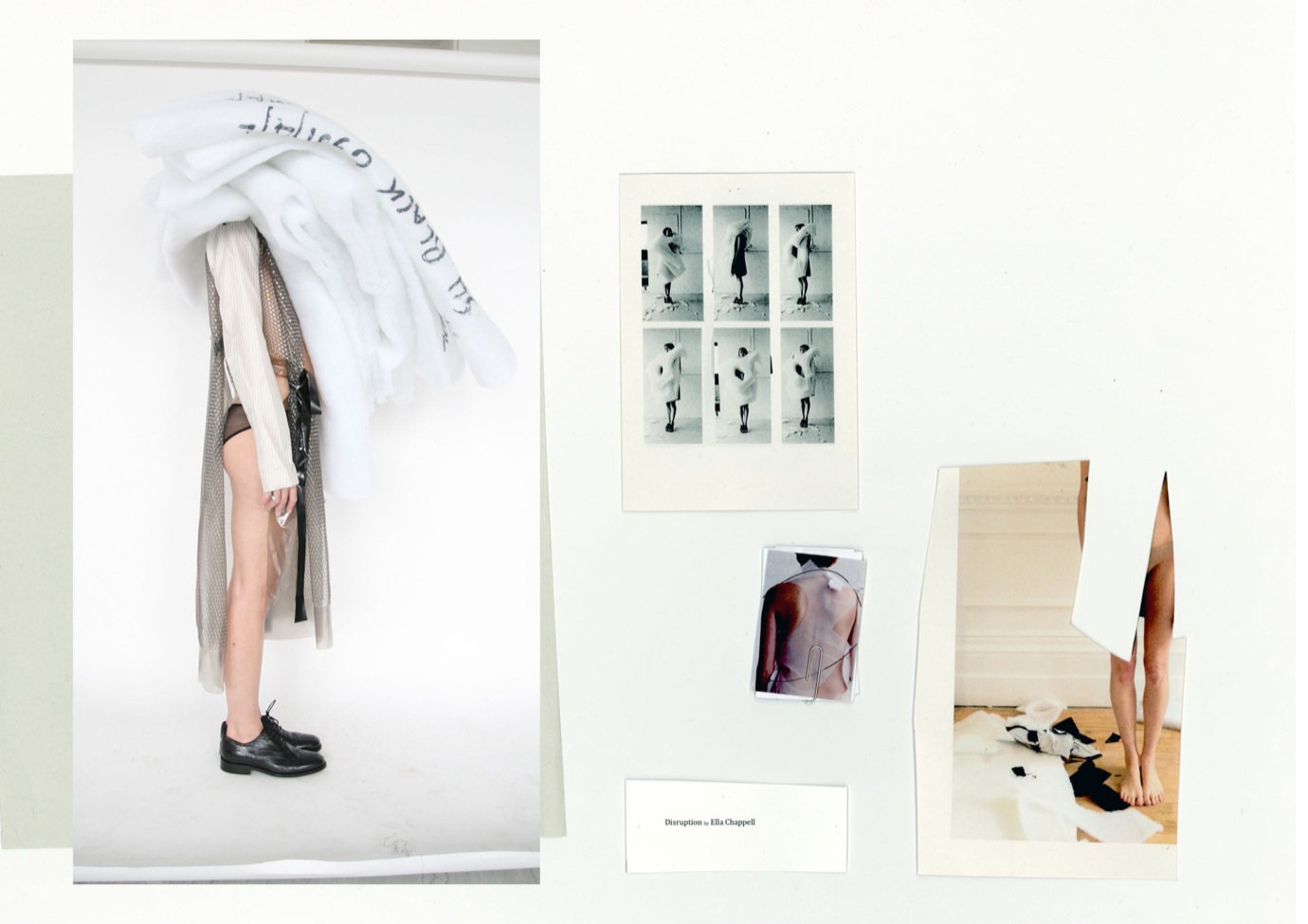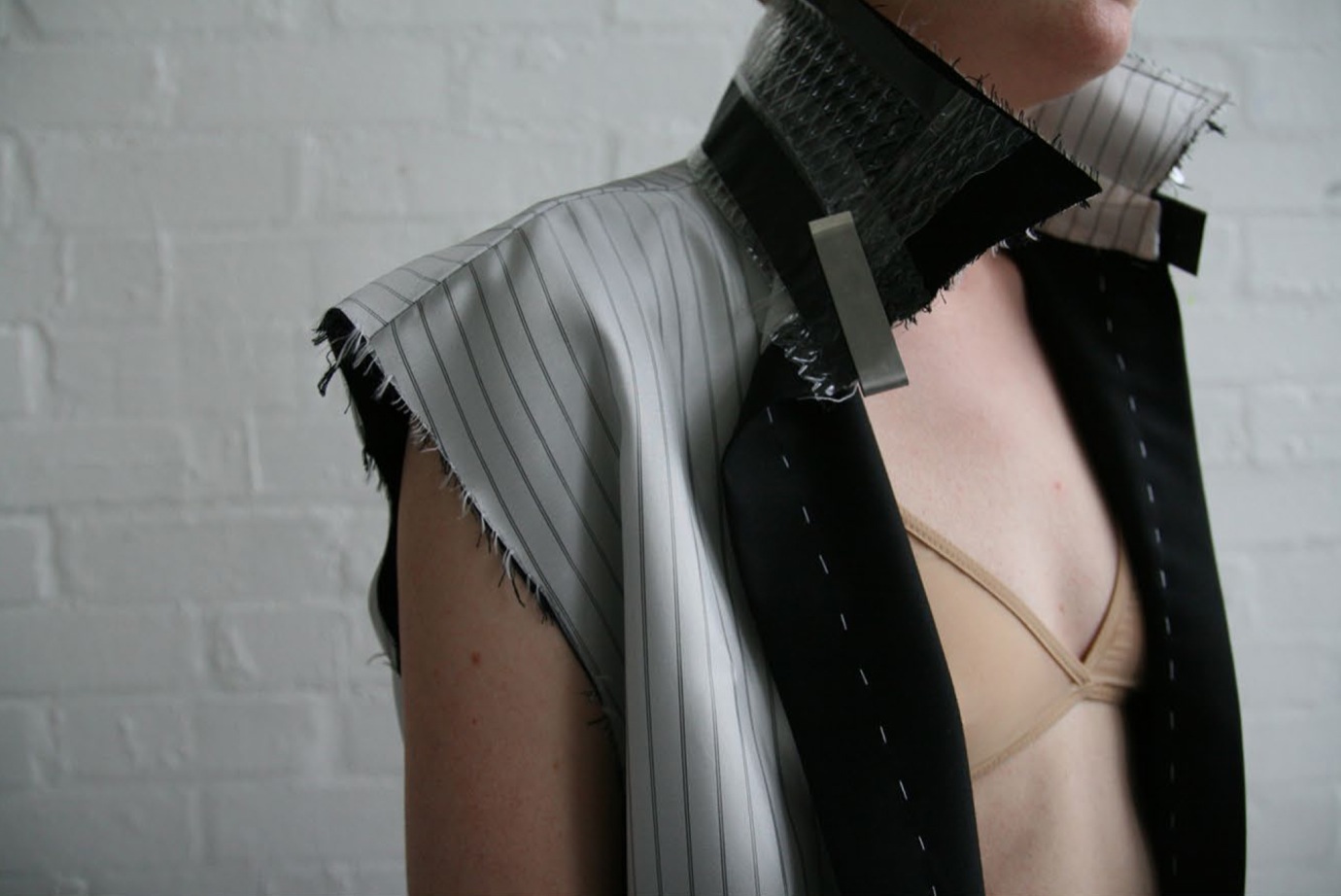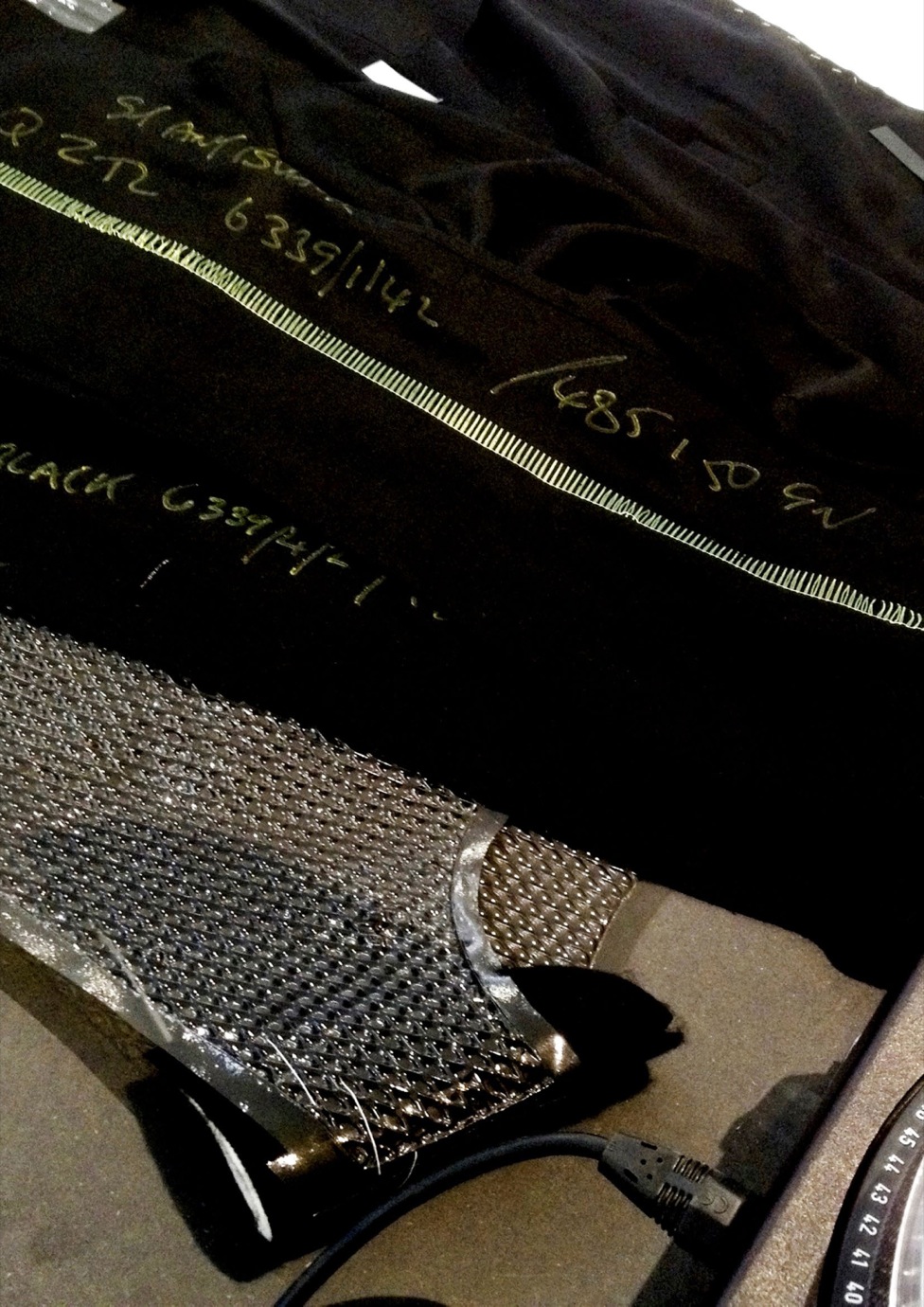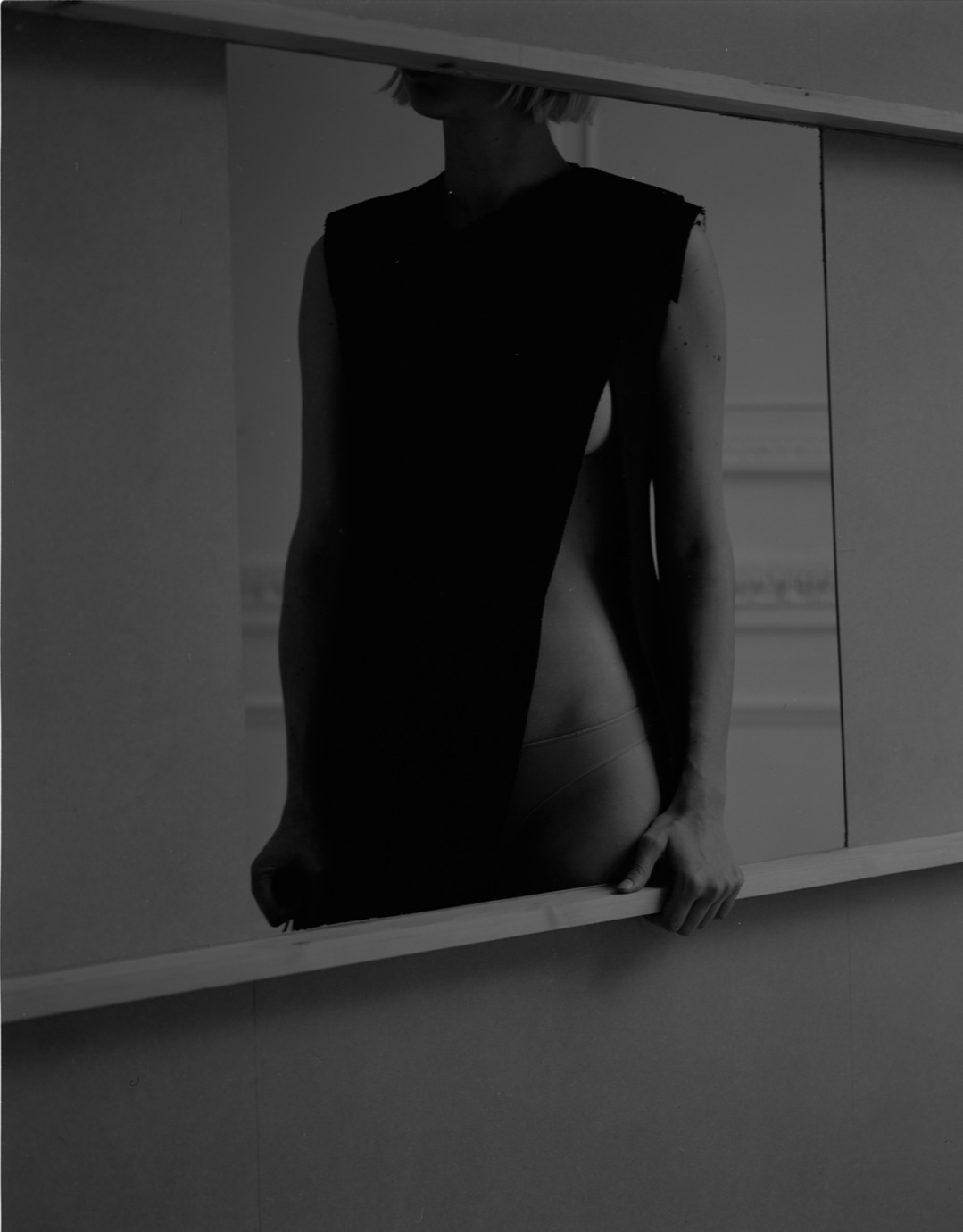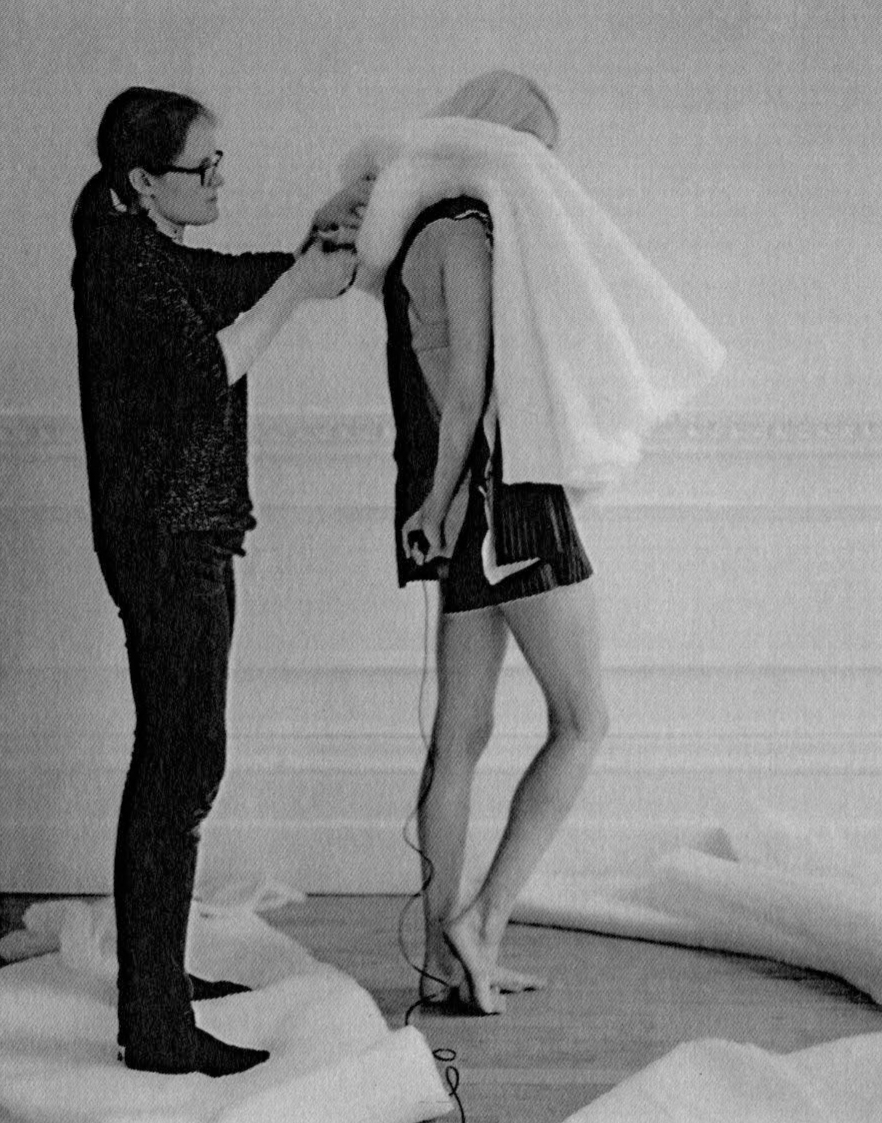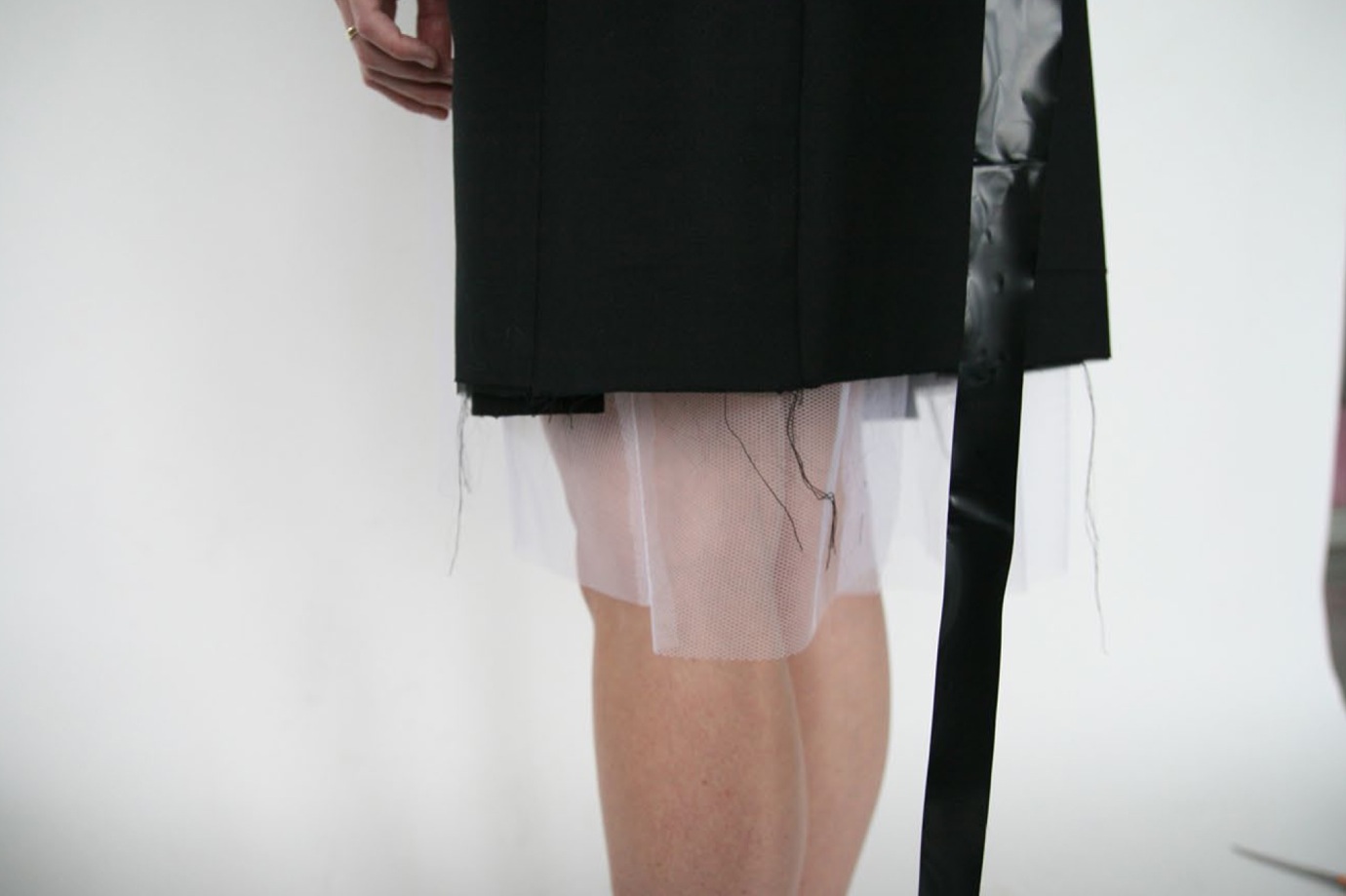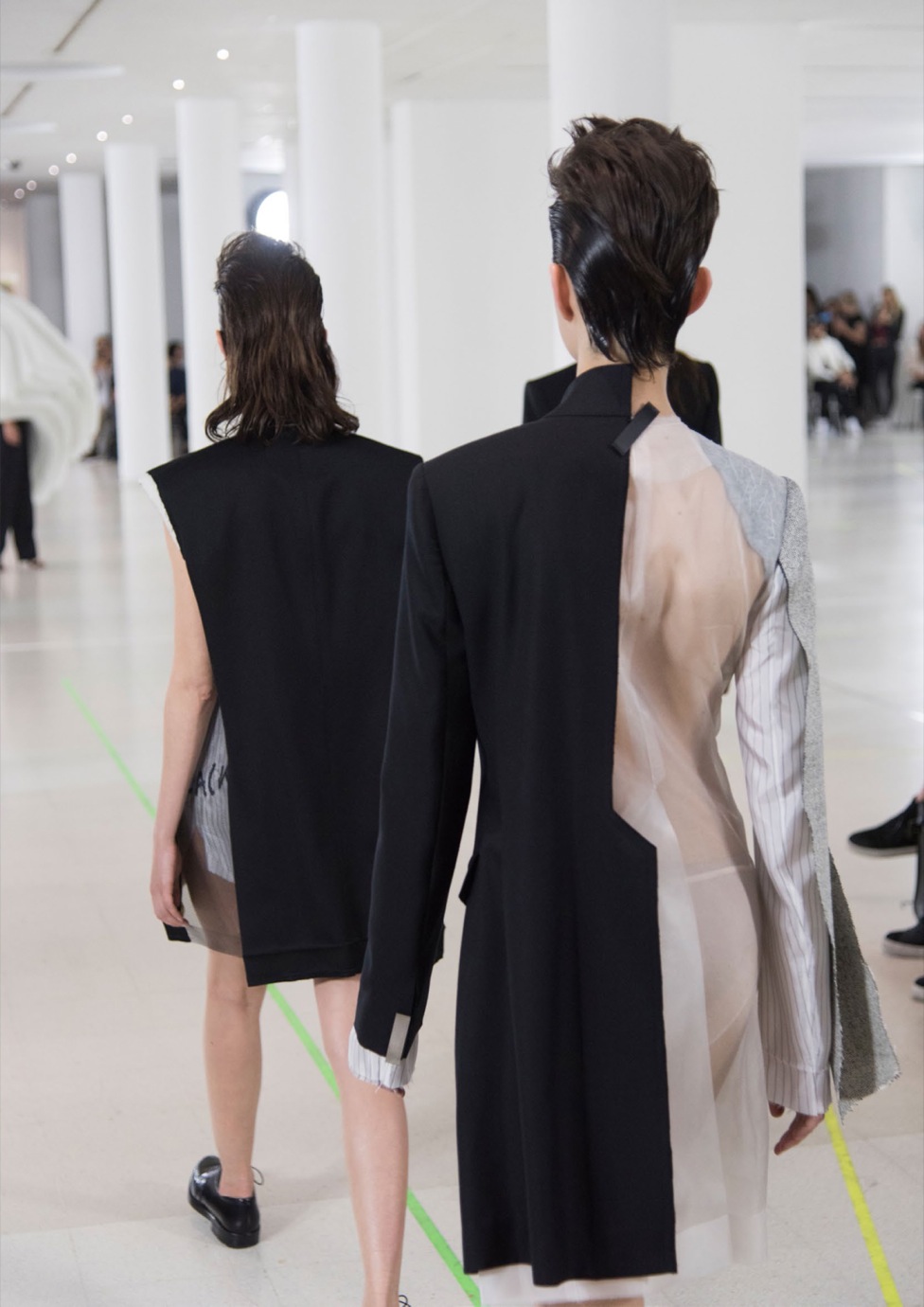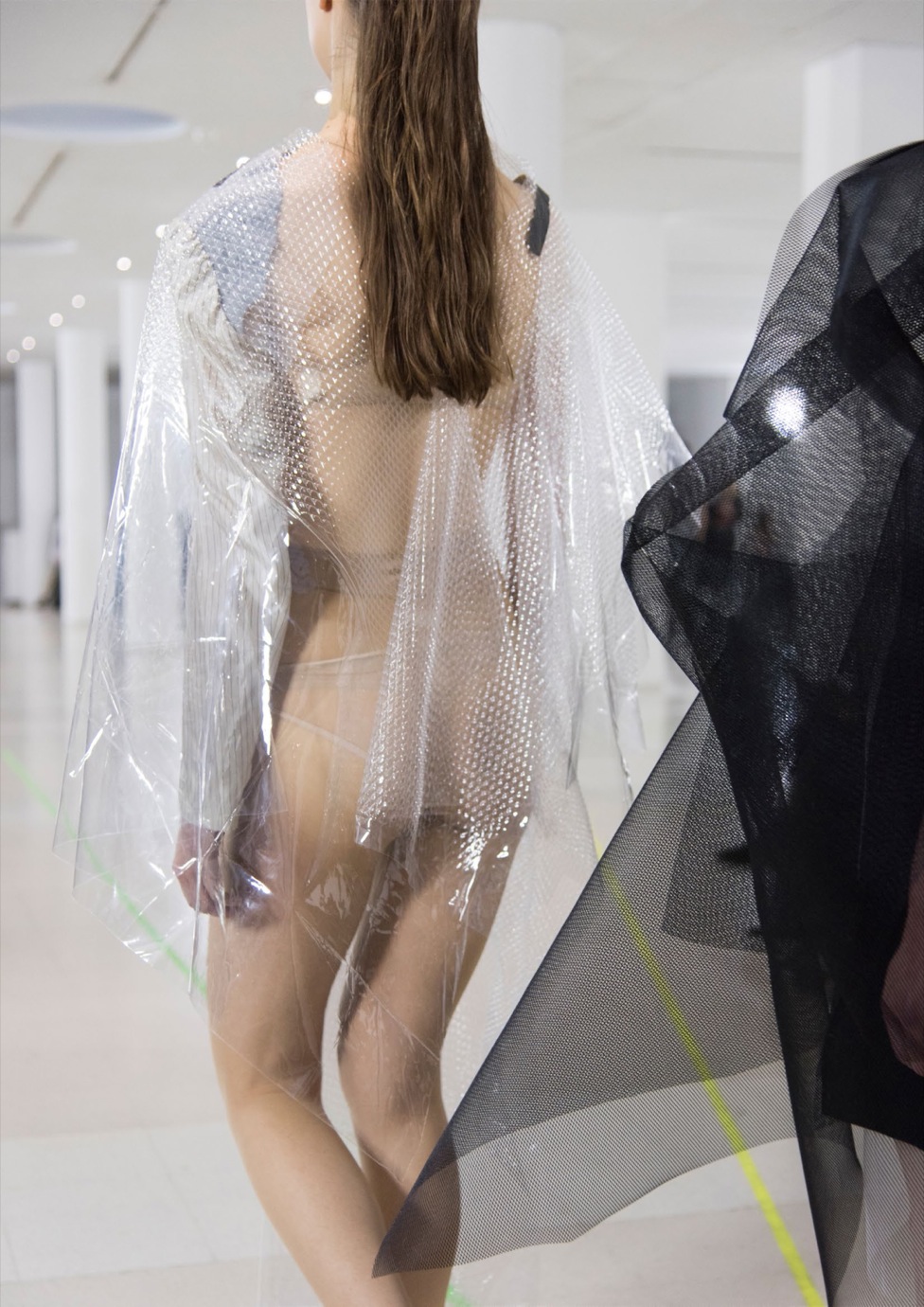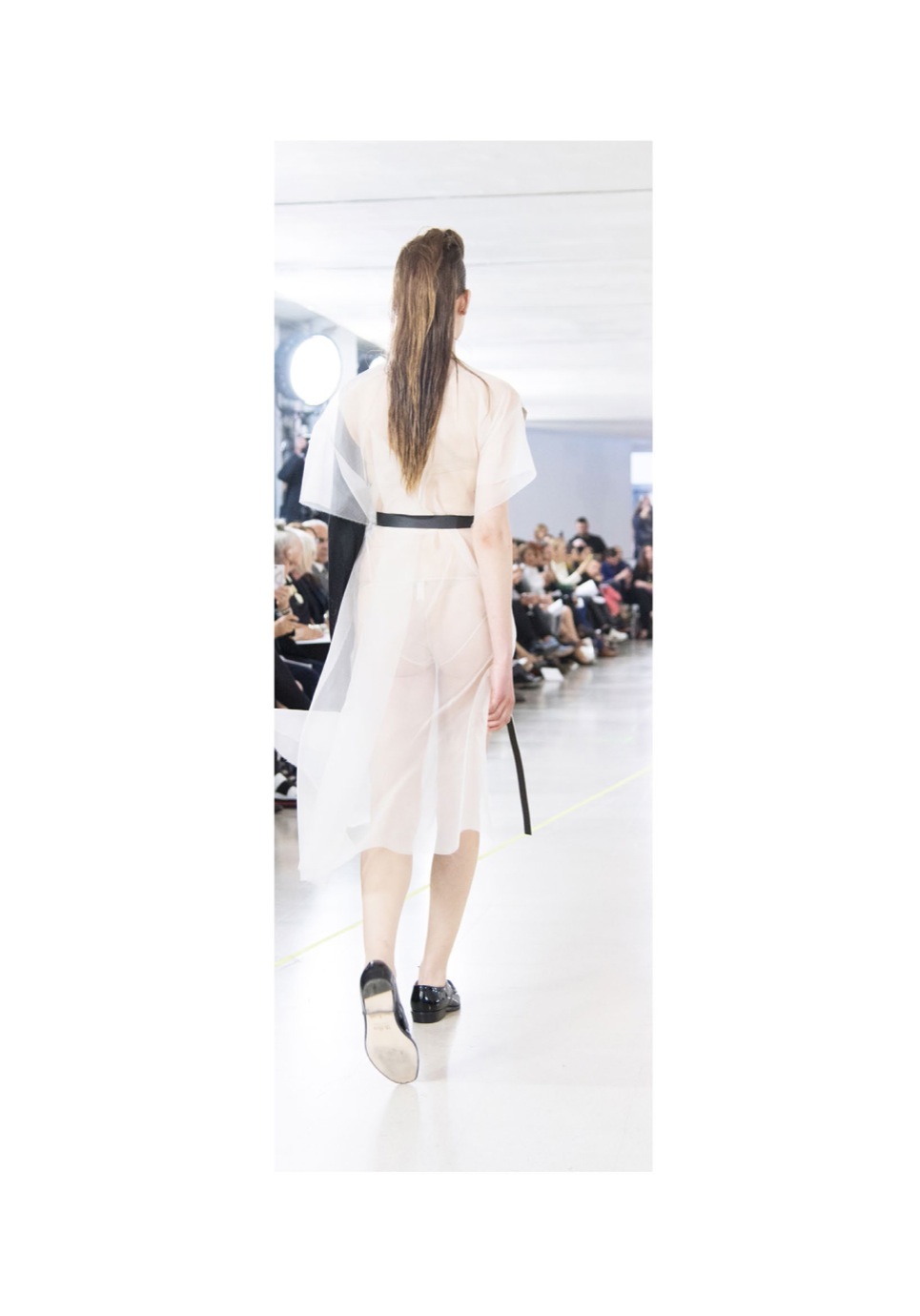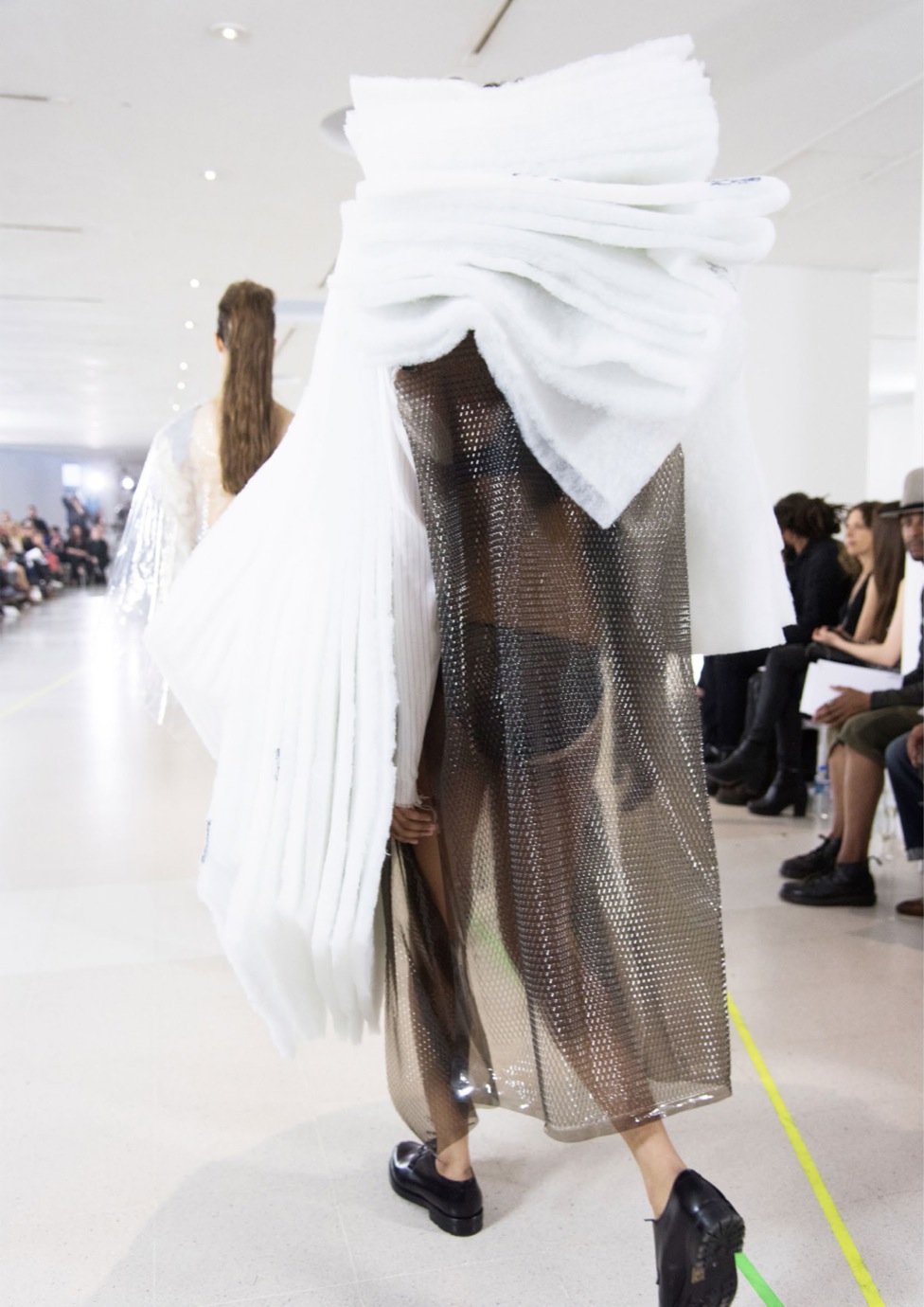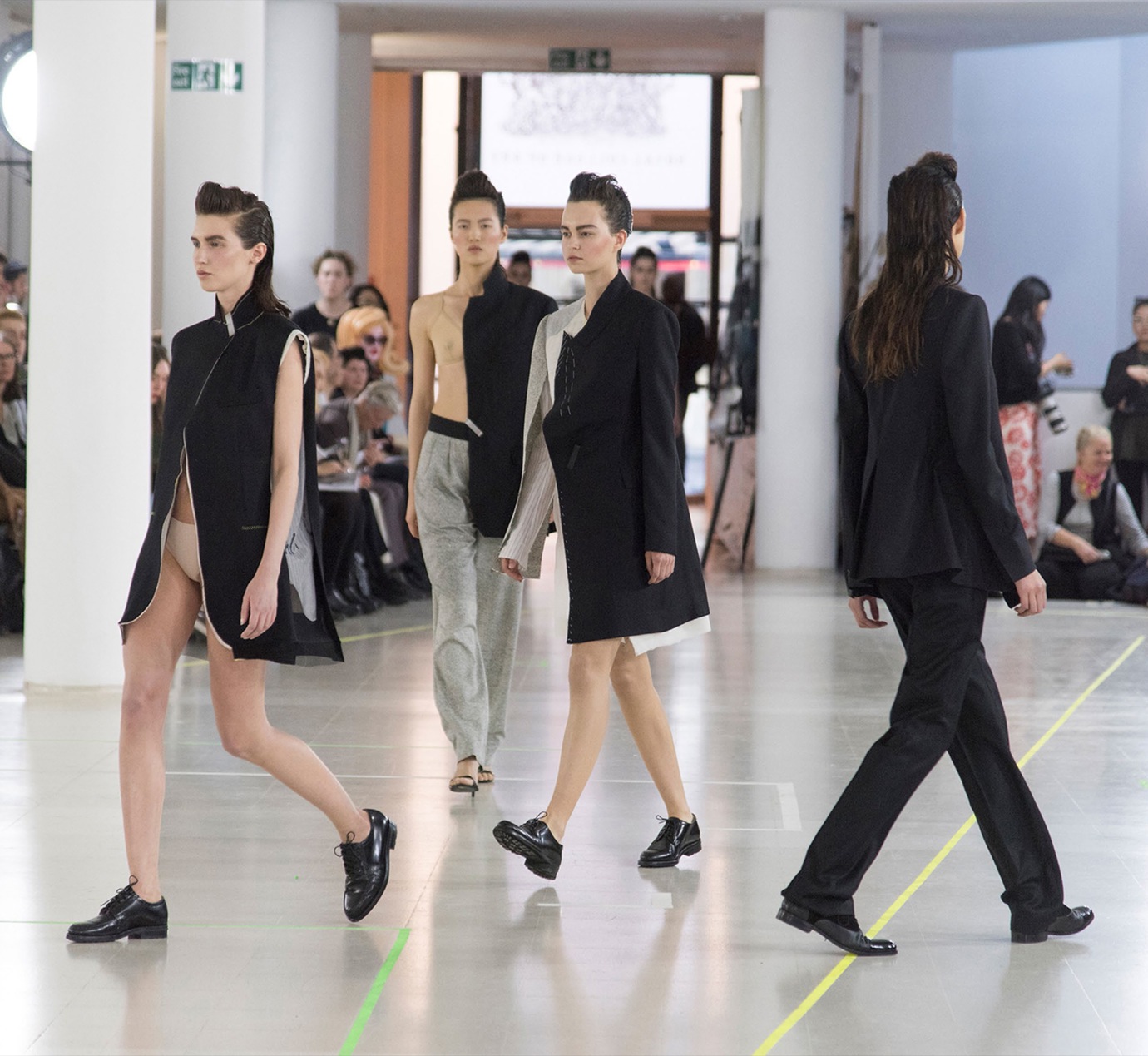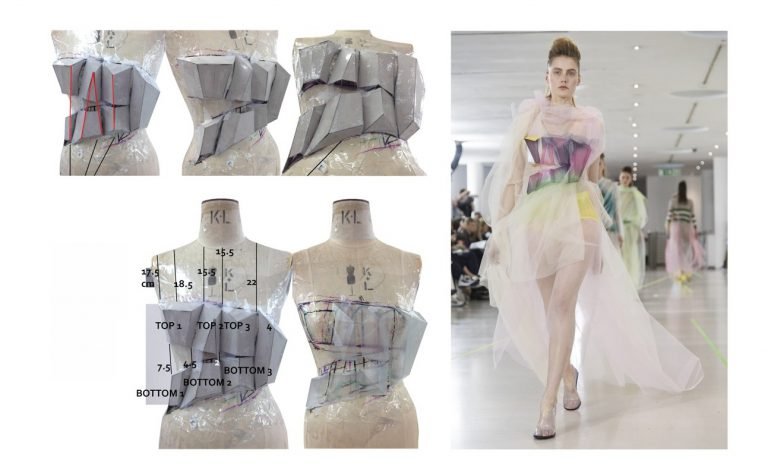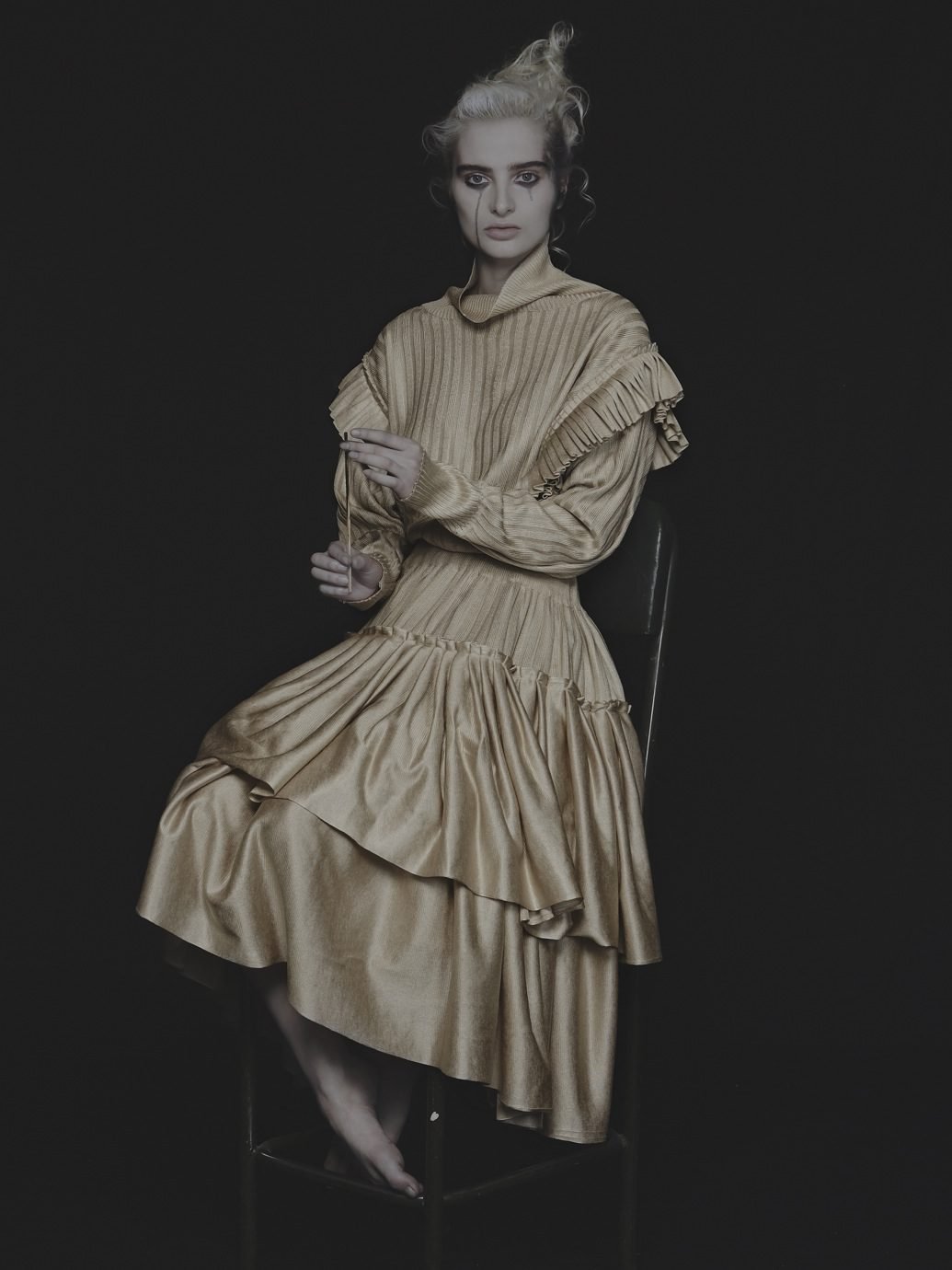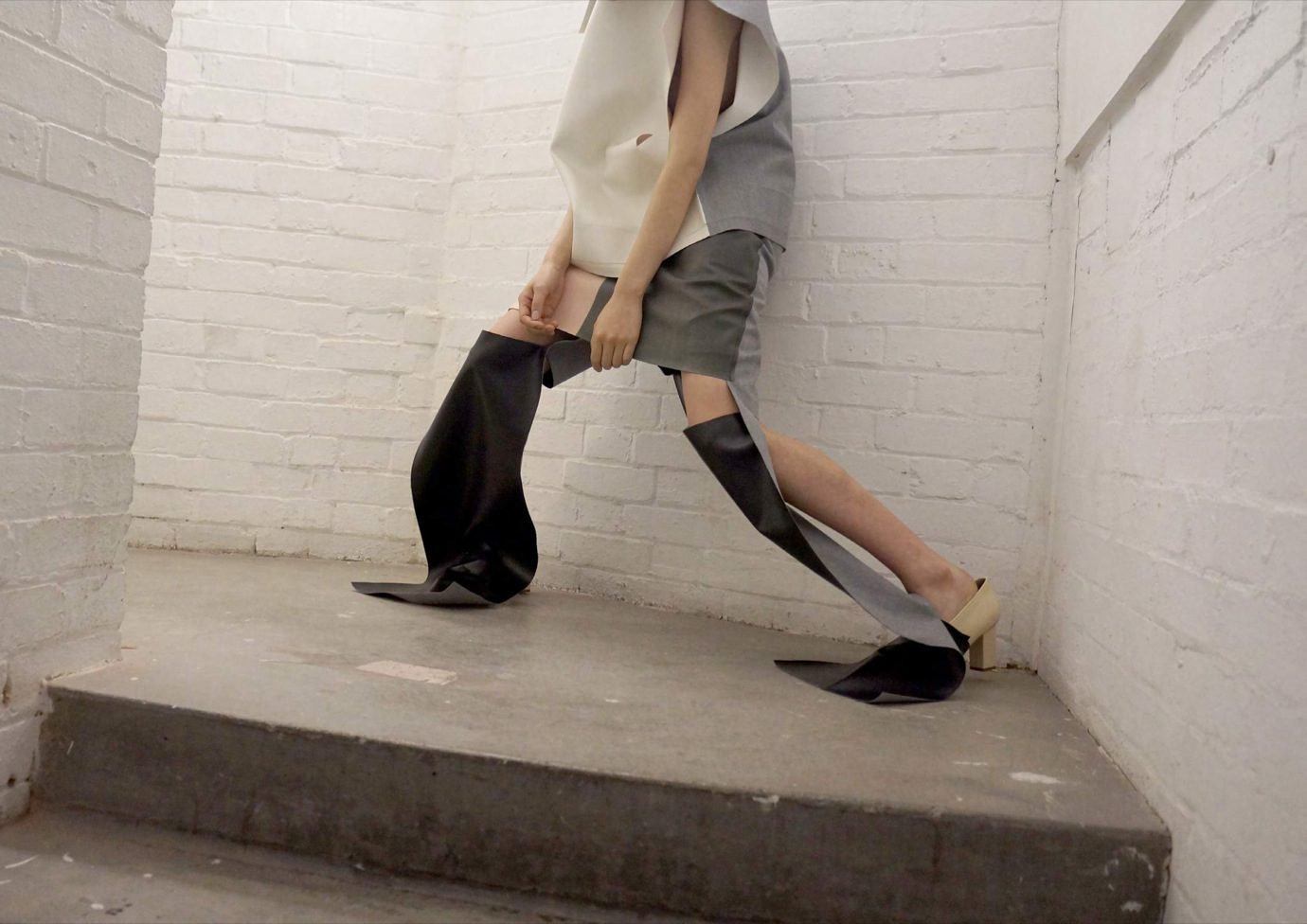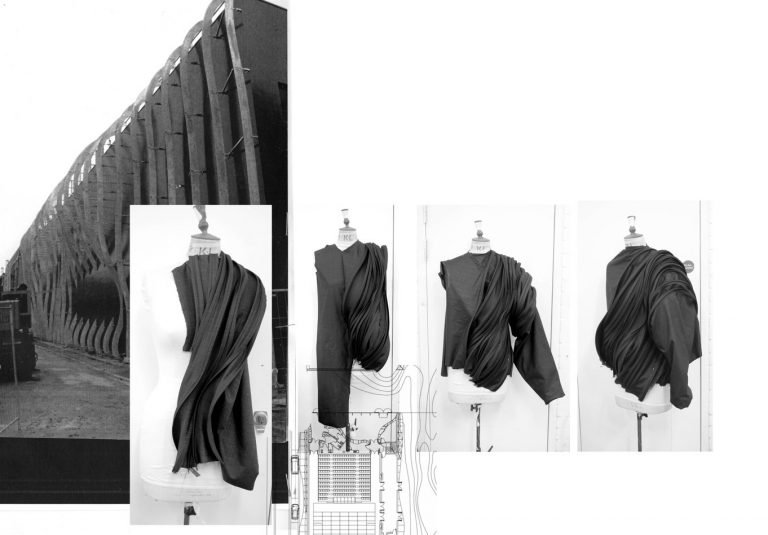“I CREATE IMMERSIVE WORLDS CONSISTING OF POETRY, ARCHITECTURAL INSTALLATIONS & MINT TEA.”
Despite the obvious intellectual approach to design, Manchester-born Rebecca Stant is careful not to describe her practice as conceptual. “The word conceptual is very evocative,” she argues over e-mail – “and it makes me sound very arty and highbrow.” She emphasises the physicality of her practice, as she enjoys working ‘in real’; that is to say cutting, draping and assembling on the body using both existing garments and abstract pieces. Through her garments, she creates immersive worlds, describing them as consisting of “poetry, architectural installations & mint tea.”
Her architectural thinking came to show in her graduate collection, which took its inspiration from the work by ’70s conceptual artist Gordon Matta Clark, who is known for his massive site-specific architectural interventions. He translated intellectual concepts of deconstruction to very physical terms as he destroyed, altered and rebuilt whole buildings as art works (deconstruction was later to be picked up by fashion with the emergence of the Antwerp Six). “There is something very cold, brutal & overtly masculine in Matta-Clark’s work – voiding a building of its intended purpose,” she says of the artist, whose work she was introduced to by her architect brother. She translated this architectural disassembling to the worn garment by similarly cutting away and creating voids, using layered bubble-wrap plastics and synthetic materials. “I found that cutting away and exposing the female body gave a softness, sensitivity and vulnerability. It also had implications of rendering women’s clothes useless or functionless. Gradually I felt I was dismantling, breaking down existing ideas of femininity – not depending upon preconceptions of what it is to be powerful or sexy as a woman instead embracing this fragility,” she explains.

